We thoroughly tested the BH Lynx SLS: much more than a competition XC bike
The BH Lynx SLS is the latest XC bike from the brand and it bets on short-travel mountain bikes of the latest generation. Its aesthetics are similar to other similar models on the market but this Lynx SLS has its own arguments and a differentiating performance. We have tested it for a long time and here we tell you everything about it.
Here you can check all the models and prices of the BH Lynx SLS.
BH Lynx SLS is the lightest full suspension from the brand but doesn't compromise on anything
During some races, the BH Coloma Team riders carried the Lynx SLS with a cover to preserve what it hid until its presentation, but the truth is that it was predictable. The integration of the shock absorber in the top tube is something that is not new today and, considering the advantages it offers, it is not surprising that it is spreading. Apart from an attractive aesthetic, it allows to build a more compact frame, maintaining a conventional main triangle, where two water bottles fit easily, and at the same time, compact dimensions that will facilitate freedom of movement and the installation of telescopic seatposts without travel limitation.
RECOMENDADO
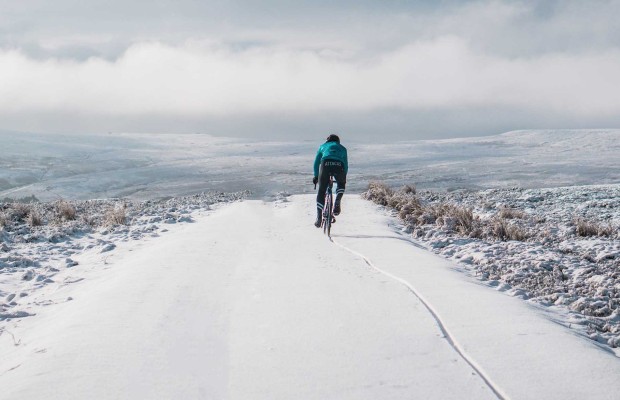
Benefits of training in the cold
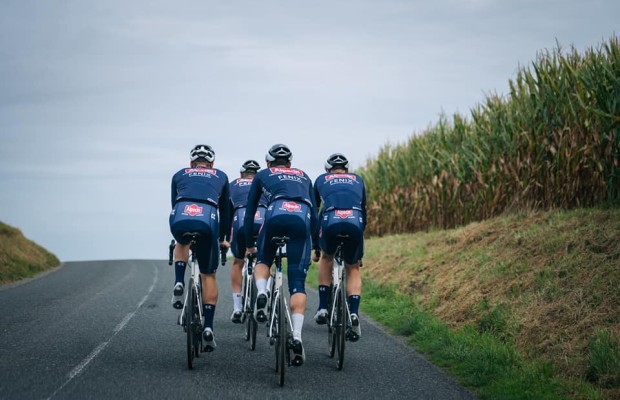
The cyclist's patience: how long, gentle training sessions build your best season

Tips for cycling in the rain

25 cycling gifts ideas to get it right

When do helmets have to be changed? Do they have an expiration date?

Some reasons to stay away from the road in winter
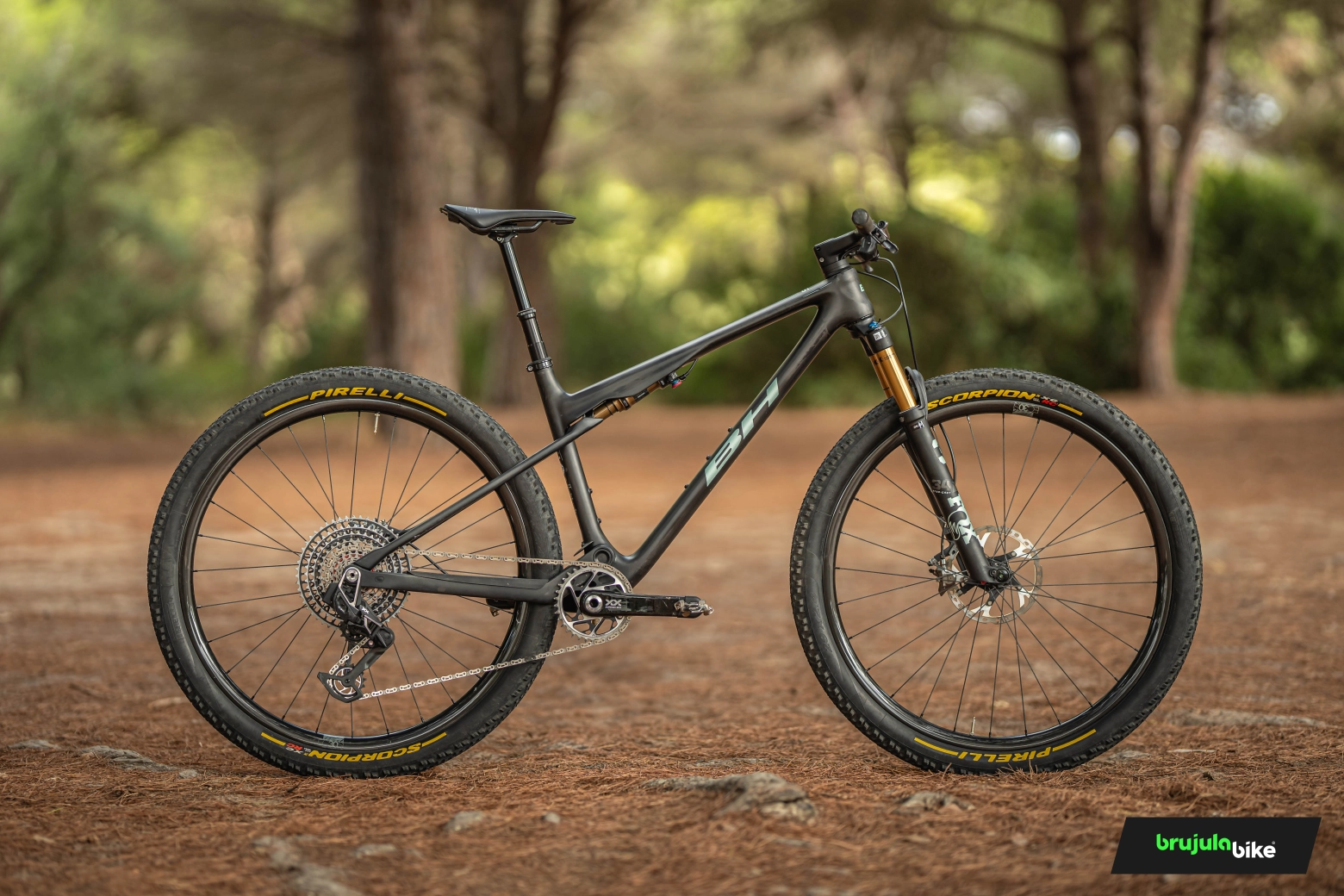
But the similarities with what already exists in the market are only aesthetic, since the BH Lynx SLS has a fairly conventional suspension system, without the integration of the shock absorber conditioning the chosen system.
It is a single-pivot suspension, but with a Split Pivot articulation point concentric to the rear axle, as we already find in its sister Lynx Race, and the upper attachment of the seatstays with the shock absorber is guided by a small rocker arm, giving the rear end 80mm of travel.
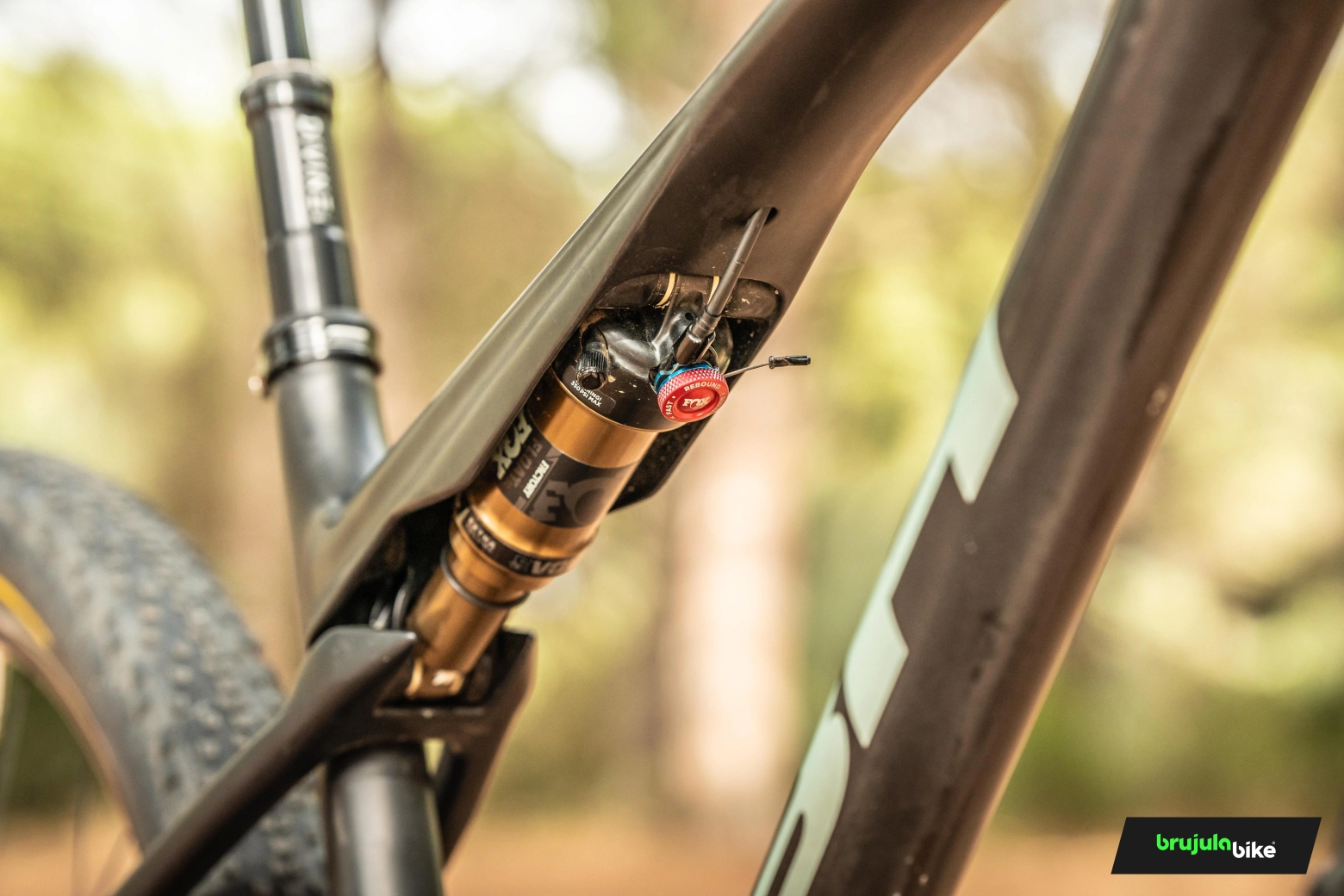
As we can see, despite being a relatively simple system and a frame where weight has been a priority, the rear articulation has not been sacrificed, as has been so common lately in the market.
The 80mm of travel in the rear suspension is combined with a 110mm fork, which gives us an idea that certain capabilities are not intended to be sacrificed.
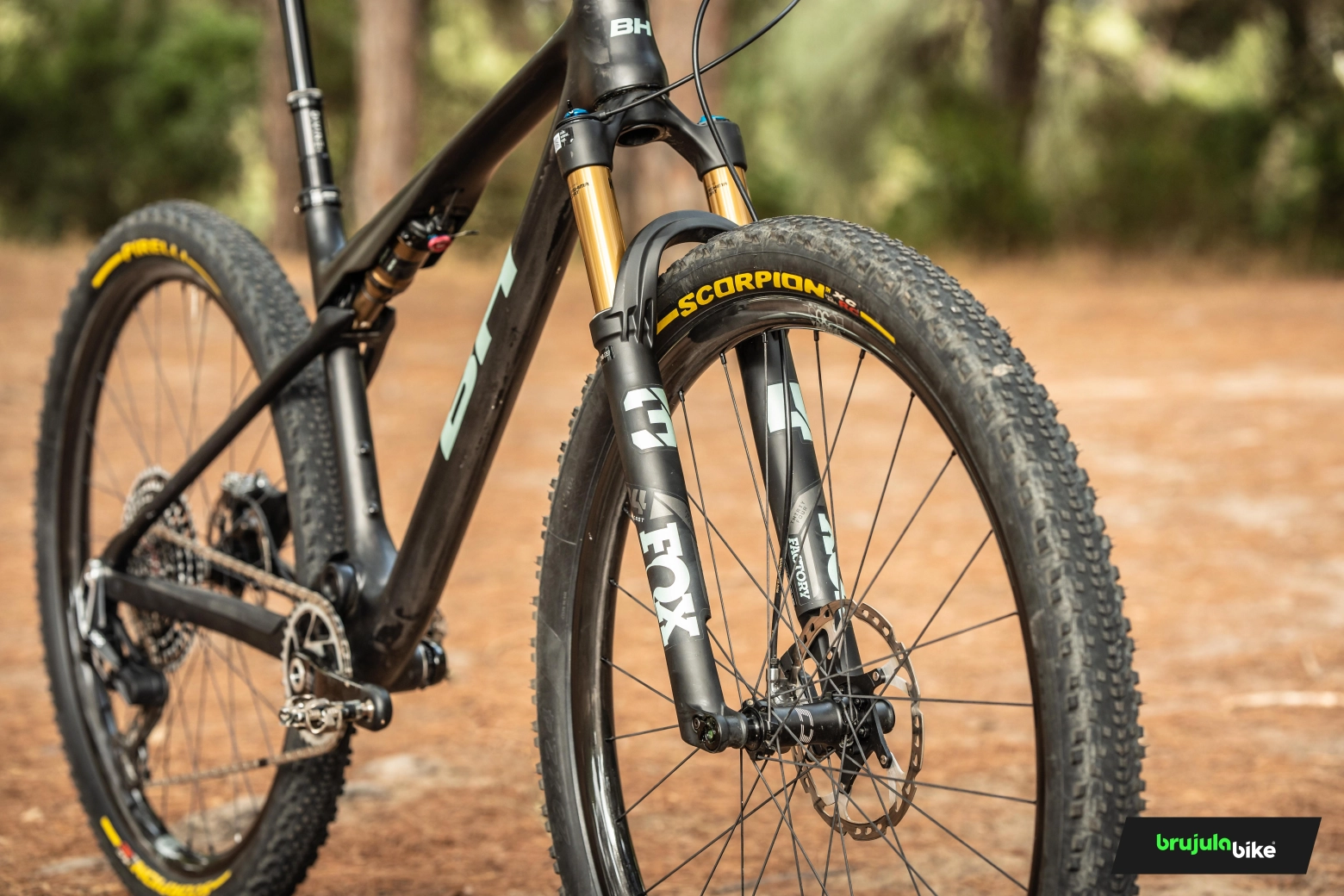
The frame lines are especially sleek, especially the top tube, which stands out for its thinness when viewed laterally, as it has an oval shape that is slightly wider. The top tube has a more pronounced flattened shape, especially in its front half, and in the rear, as we can see, it is completely open at the bottom to create just enough space for the shock absorber.
The chainstays have a generous vertical section to offer the necessary stiffness and the seatstays, with a square section, have at the top, the exact shape that makes them fit into the front triangle as if it were a puzzle, achieving a very striking aesthetic effect.
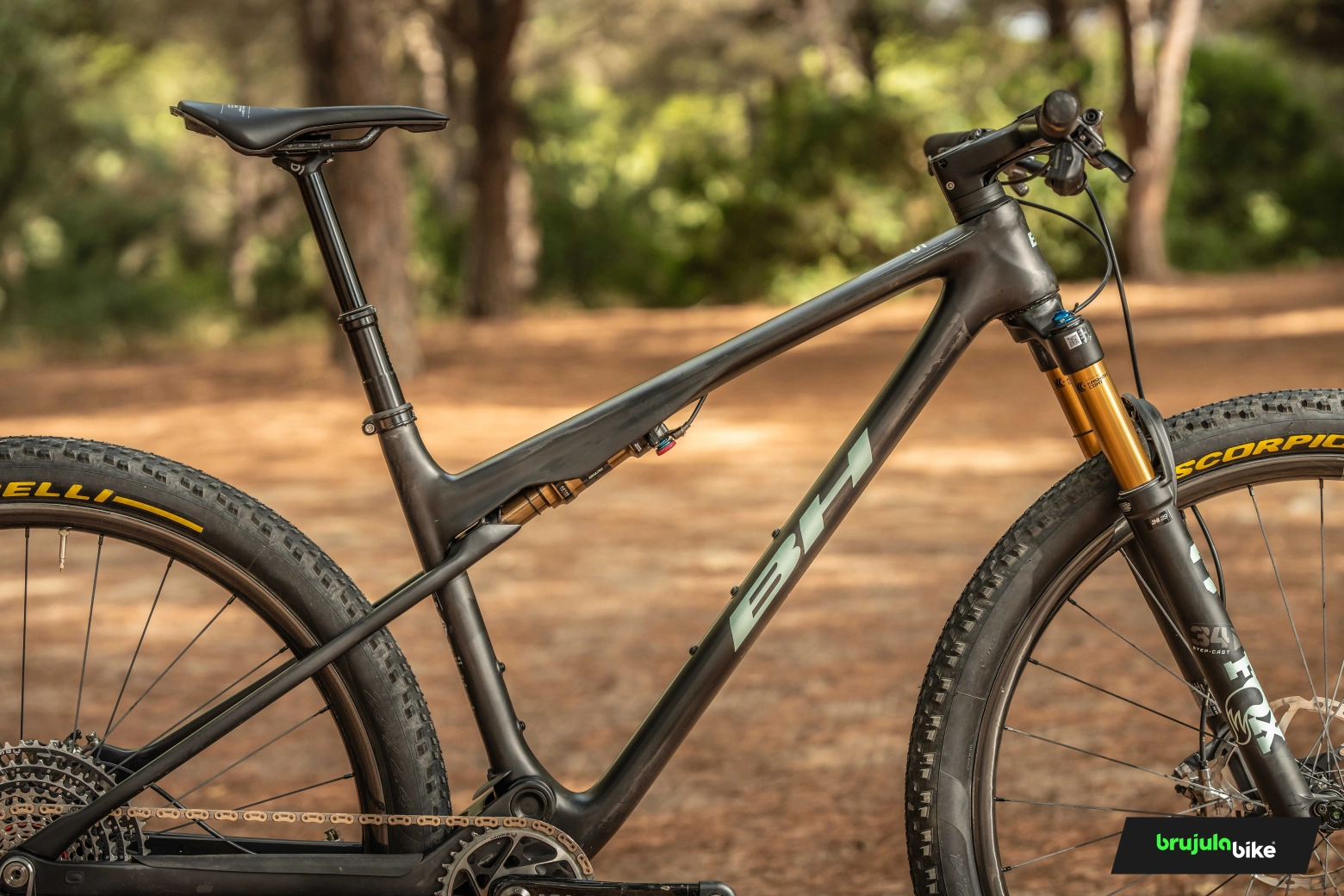
The through bolts that fix the pivot points of the rocker arm and shock absorber are blind on their right side, so the bike's aesthetics on this side of the drivetrain are extremely clean. On the left side, these bolts can be seen as in any other bike.
Although weight has been a priority in the design of the Lynx SLS, no expense has been spared in providing its main pivot point with oversized bearings and a 1-inch axle, guaranteeing the necessary stiffness. In addition, all other pivot points use bearings.
Another area where no material has been spared is the rear brake caliper mounting area, as well as in the steering area, where we find a larger upper bearing that allows the routing of hoses through its interior.
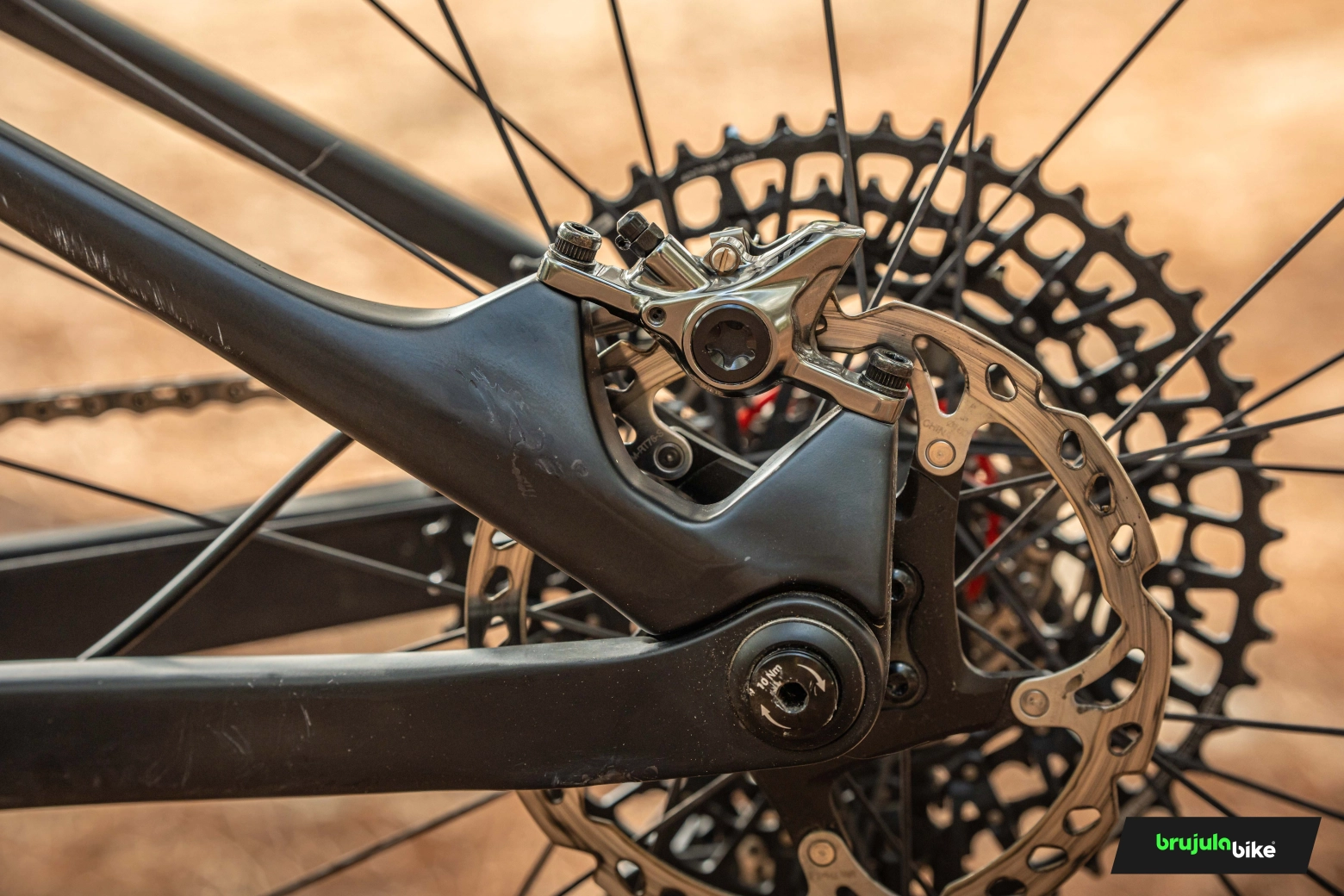
The geometry presented by the BH Lynx SLS is very balanced. It adopts the new trends in terms of angles and length but without taking them to the extreme. Thus, we find a 67-degree head angle, which will give us sufficient stability to face descents and technical sections, but without making the Lynx SLS slow to react. The seat tube angle is 76 degrees, which will place us in an optimal position for climbing.
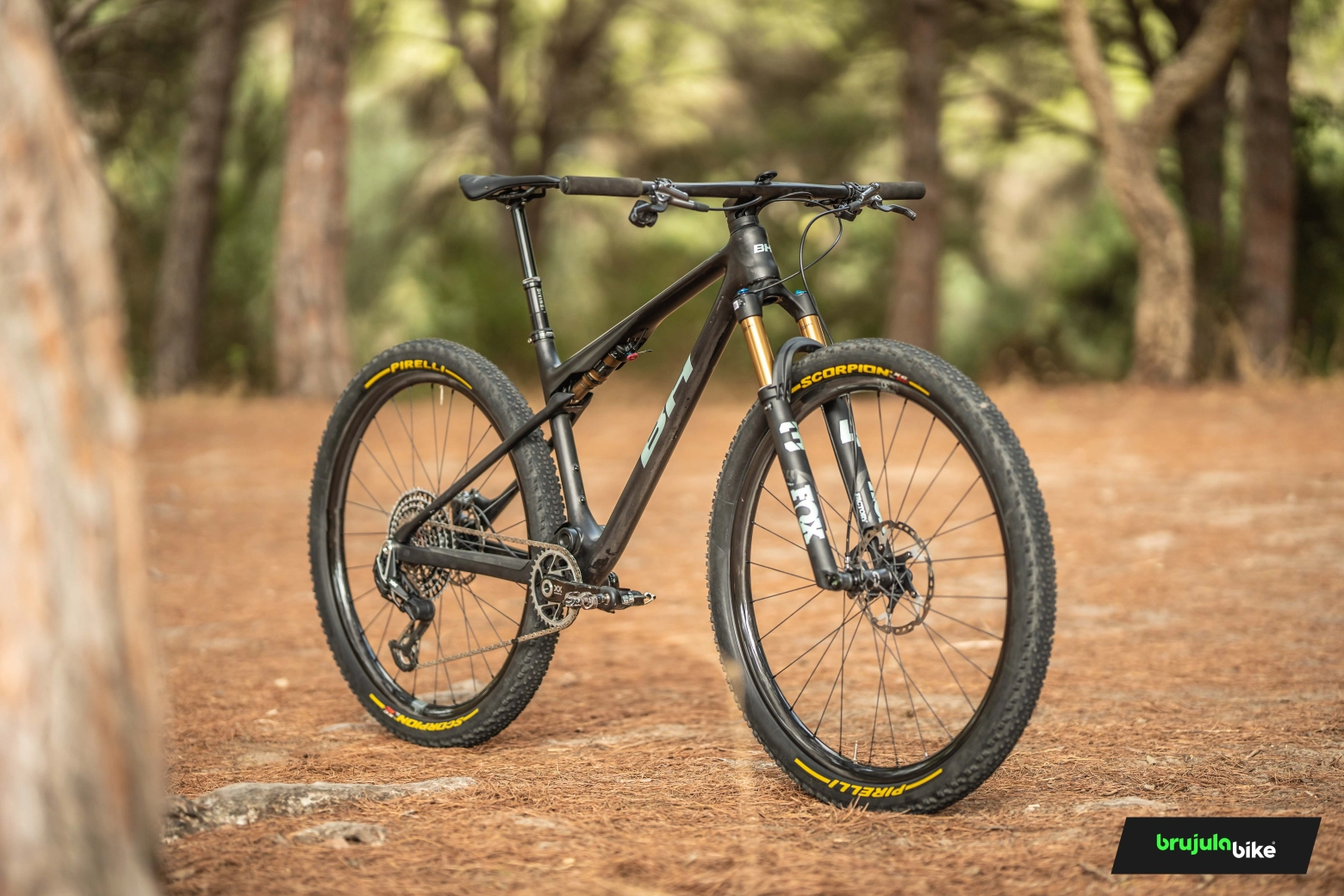
The length is also moderate, with a reach of 445mm in size M and a wheelbase of 1149mm.
In the chainstays we find a surprising measurement, as 426mm in a dual suspension bike that mounts 2.4" tires is a really short measurement, which will give the bike an extra agility in the rear end.
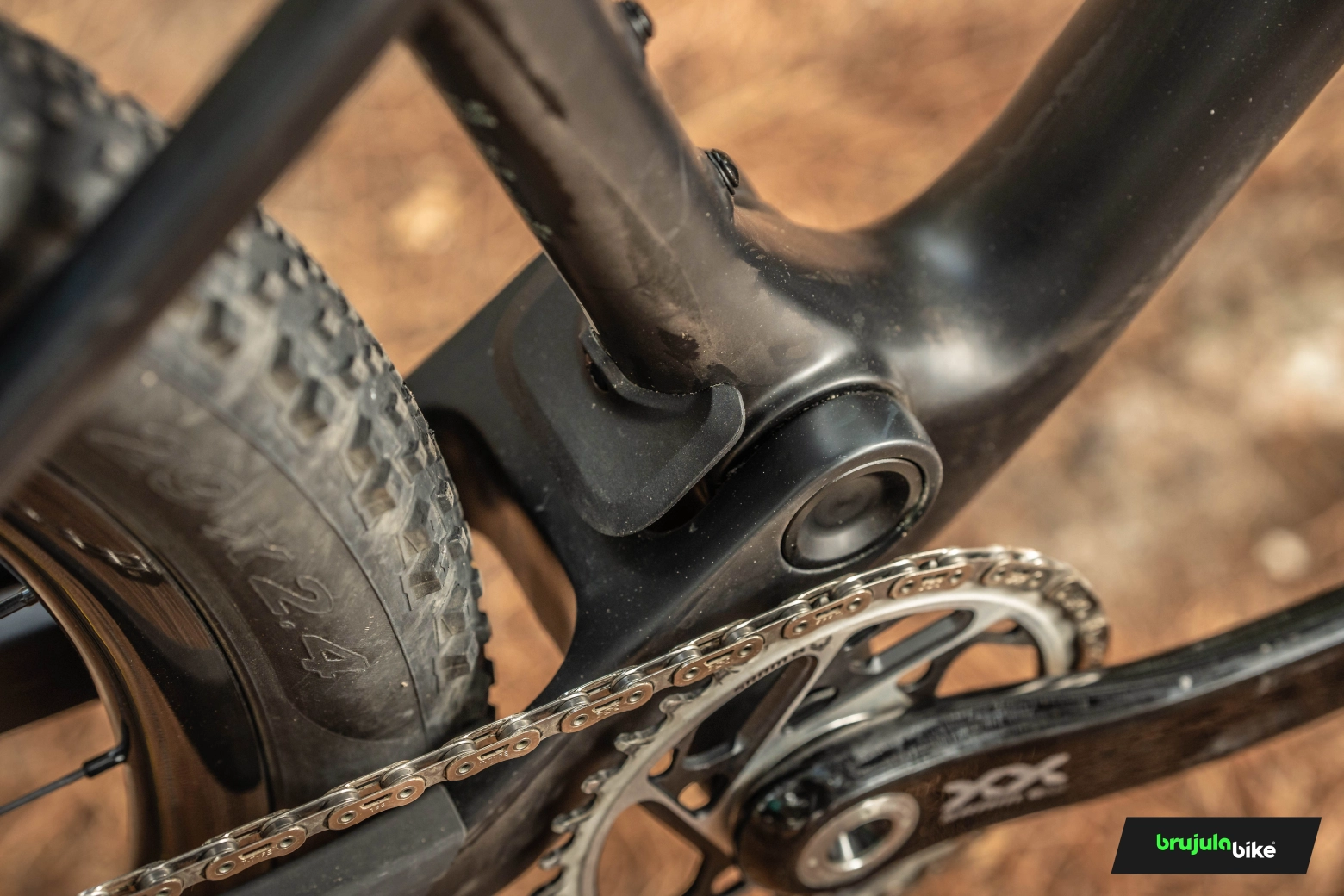
The fact of having a moderate suspension travel allows for a slightly lower bottom bracket and, with 50mm of drop, places the center of gravity in a more stable position.
BH Lynx SLS 9.7: a spectacular build without Flight Attendant
The bike we tested is the second in the range, but if we look at its build, we are sure that many would choose it as their first option, especially considering the price difference of 2,000€ compared to the top-of-the-line model, which only differs in the Rock Shox Flight Attendant suspension and the Sram power meter.
The frame is exactly the same in all models of the range and our test bike mounts Fox suspension, with Fox 34SC Factory fork with 110mm of travel and Fox Float SL Factory shock absorber.
We also have the Sram XX SL T-Type groupset in its entirety, except for the brakes, which are entrusted to Shimano XTR.
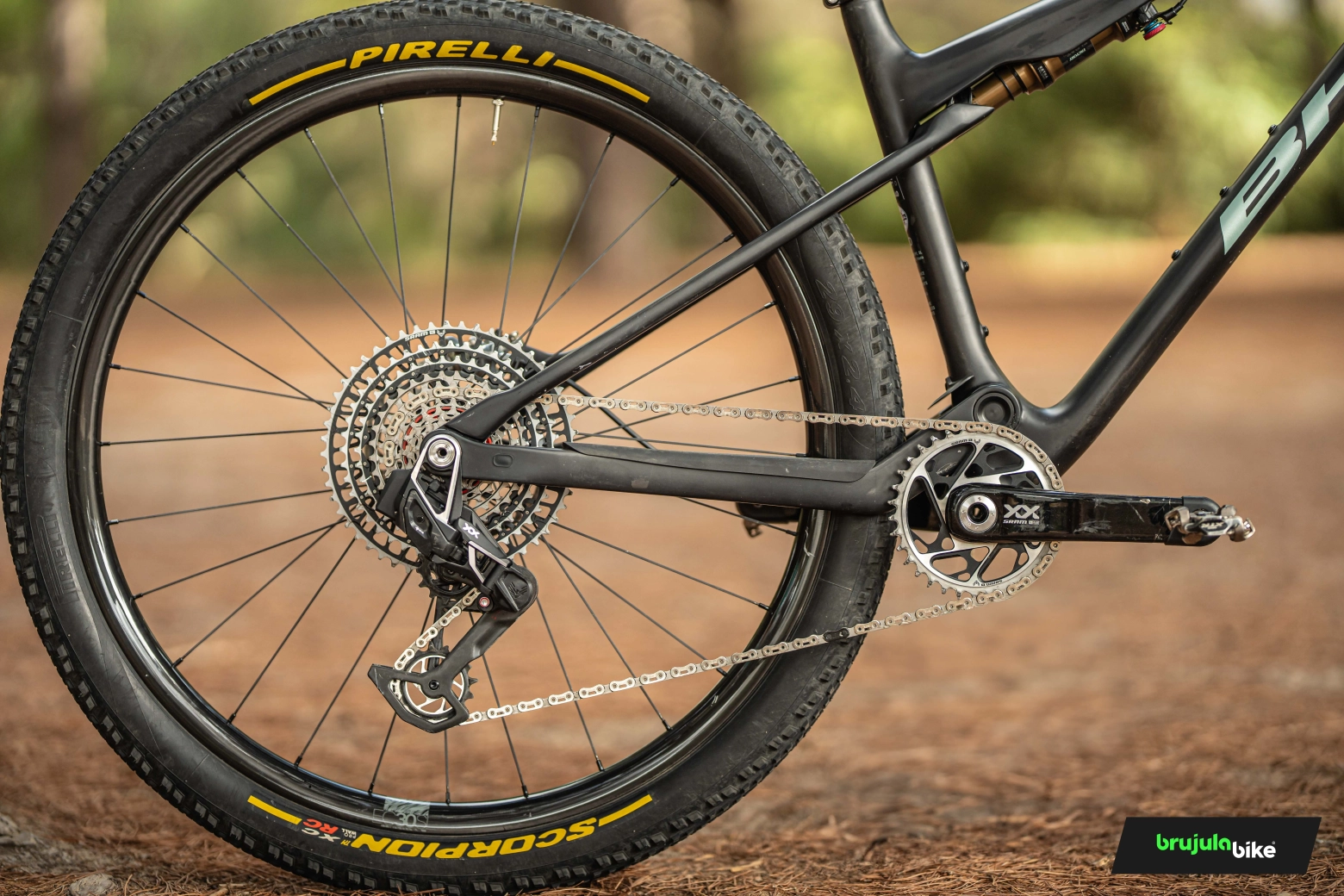
The wheels are from the brand itself and have a very good finish, with carbon rims of 30mm internal width in a glossy finish, which gives the bike a striking touch, and hubs with a Ratchet-type system that emits a sound that is noticeable wherever you go.
The tires it mounts are Pirelli Scorpion XC RC in 2.4" with reinforced Pro Wall casing, leaving aside the lighter version in search of greater reliability.
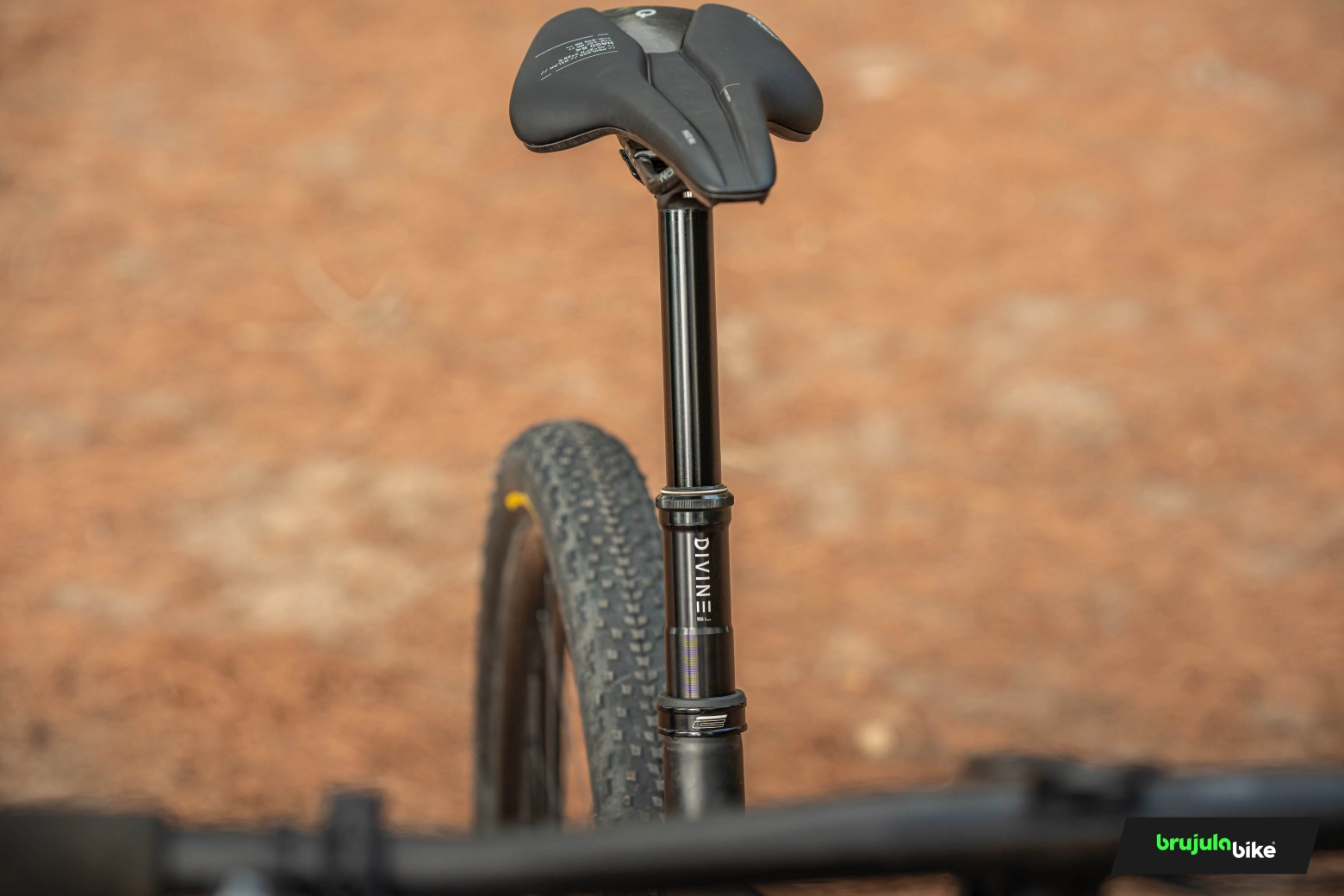
In the rest of the components, the level is not lowered at all, highlighting an integrated BH cockpit, the renowned and lightweight BikeYoke Divine SL dropper post with 125mm of travel, and a Prologo Nago R4 saddle with carbon rails.
First impressions
There was a lot of anticipation to see and get a close look at this highly advertised BH bike, and when it arrived, it did not disappoint us.
Its sleek lines give it an elegant touch and the frame shapes in the shock absorber integration area achieve a spectacular aesthetic finish.
The cable entry under the stem, and the shape of its integrated stem, with a considerable width, allow, if the hoses and cables are dimensioned correctly, to make them almost disappear from view, although in our unit, being a test bike, this was not achieved 100%.
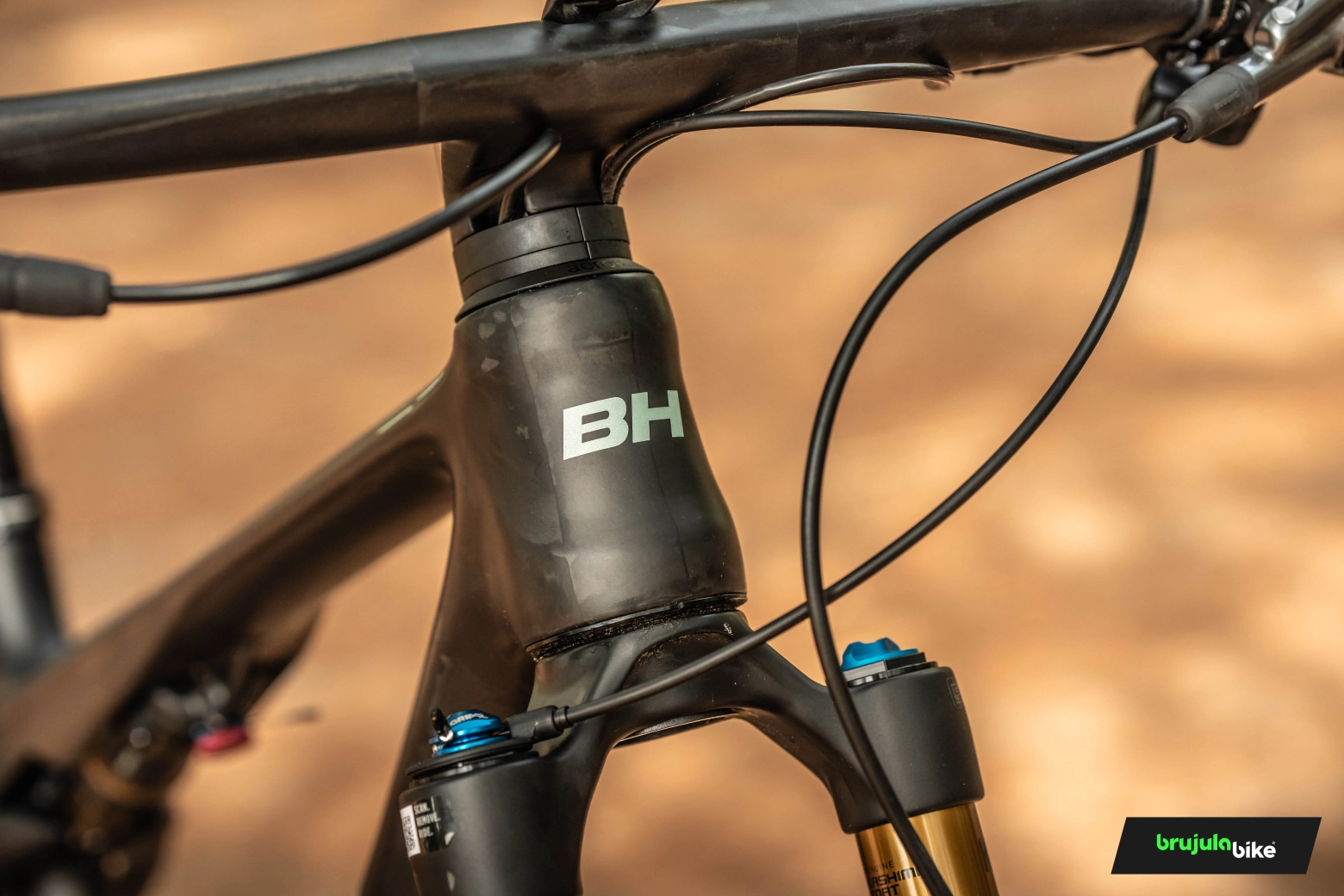
We followed the ritual of weighing it before putting on the pedals and it gave us a very good figure of 9.97kg, which we already expected, as as soon as you grab the bike, you notice a great lightness.
Considering the setup of a Fox 34 fork, a 125mm dropper post, and rolling tires but with a reinforced casing, the figure seems spectacular to us.
After this process, we made the necessary suspension adjustments and set off.
From the first meters, the BH Lynx SLS transmitted to us a good balance between sporty sensations and comfort.
The riding position is not too demanding, partly thanks to the dimensions of its integrated cockpit, which has no negative angulation.
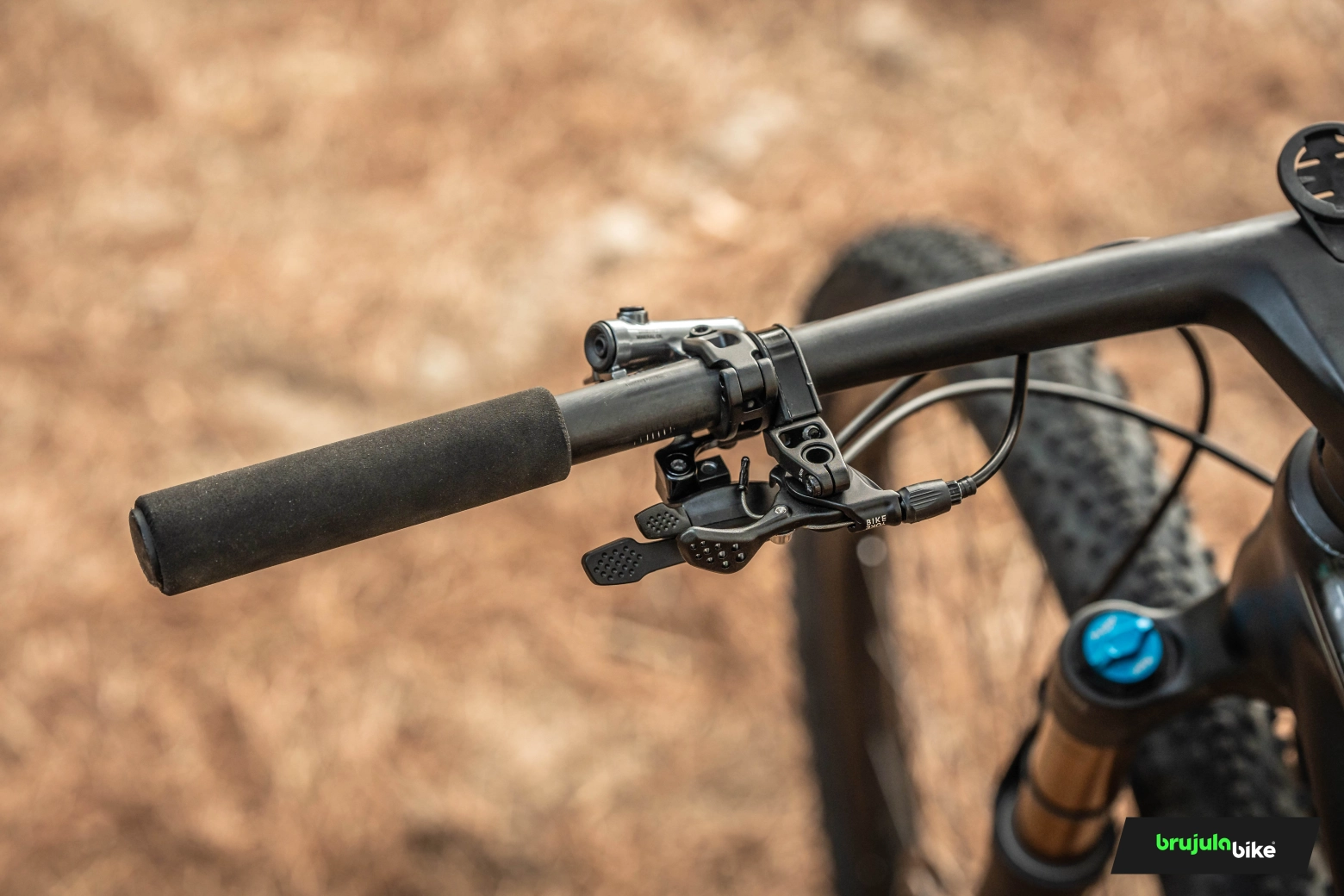
The suspensions are controlled by a two-position lever that, at first, we used quite a bit, as the suspension, despite its 80mm of travel, is quite active.
The placement of this lever, to avoid interfering with the dropper post lever, is delicate. It comes with an adapter to attach it to the brake lever, although this adapter takes up lateral space and, probably, better ergonomics are achieved using an individual clamp. In the end, we managed to adjust everything to our liking.
During the first few days, we did tests by slightly varying the sag, always close to 25%, and we found that the behavior during pedaling can vary significantly if we find the right adjustment.
In the end, we found a setting that allowed us to take advantage of the open suspension for longer periods without excessive loss of performance.
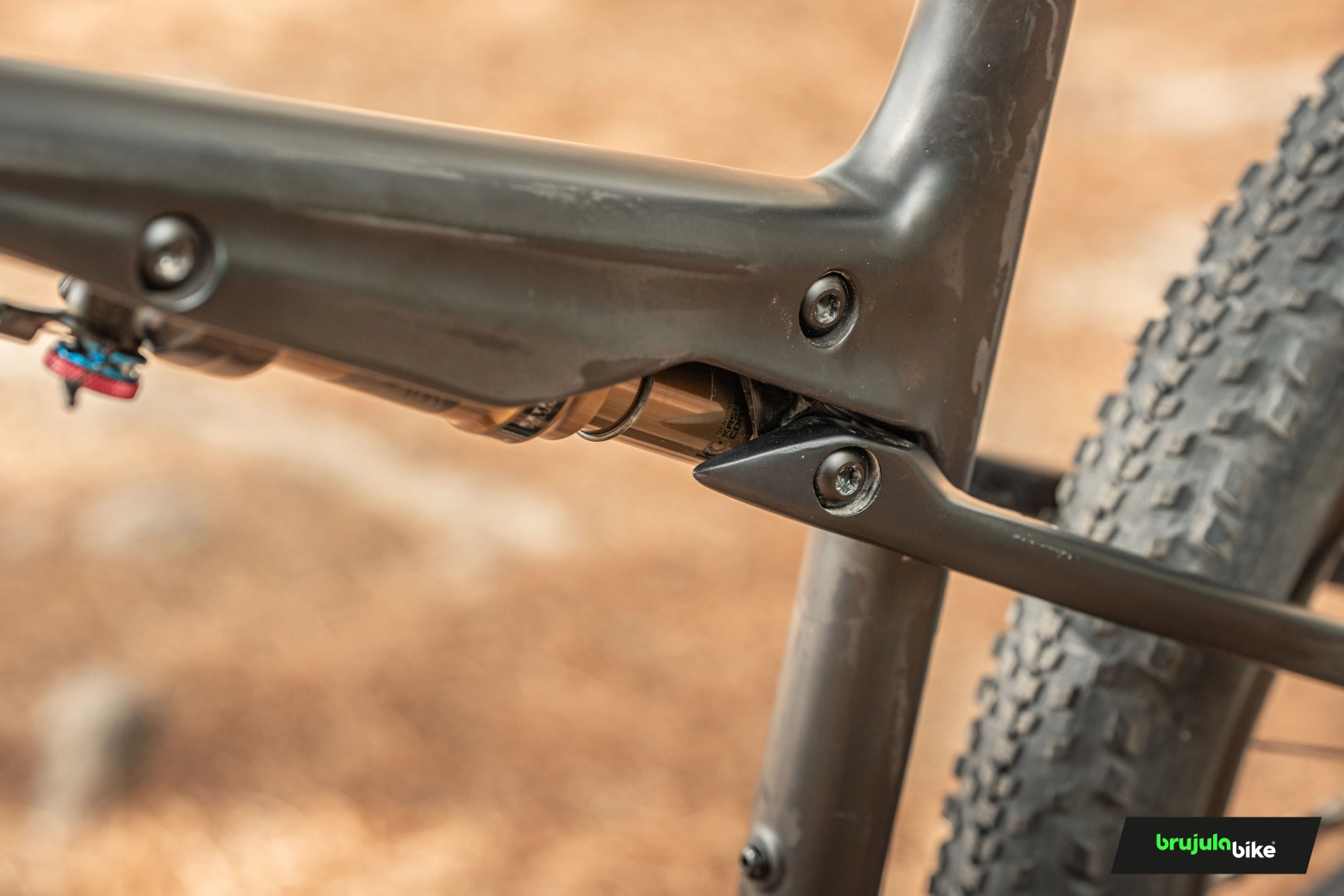
If we look at the rocker arm area during pedaling, we see that there is some movement, but we do not have that sensation of power loss, and in many situations, we benefit from the comfort and traction offered by a rear suspension that works really well.
The BH Lynx SLS is not just a competition bike
It is a bike that has practically been born in the World Cup, but this does not mean that it is an extremely racing bike and not versatile for the average user, rather the opposite. We have found a bike whose behavior aligns with the demands of a large majority of bikers looking for a very efficient and lightweight bike, and at the same time forgiving and comfortable when the terrain gets tough.
Rolling with the Lynx SLS on asphalt or fairly smooth tracks, we can lock the suspensions and turn the BH into a fully rigid bike, which transmits all the force we apply to the cranks and gives us sensations of ease to go fast, as its lightness contributes to this.
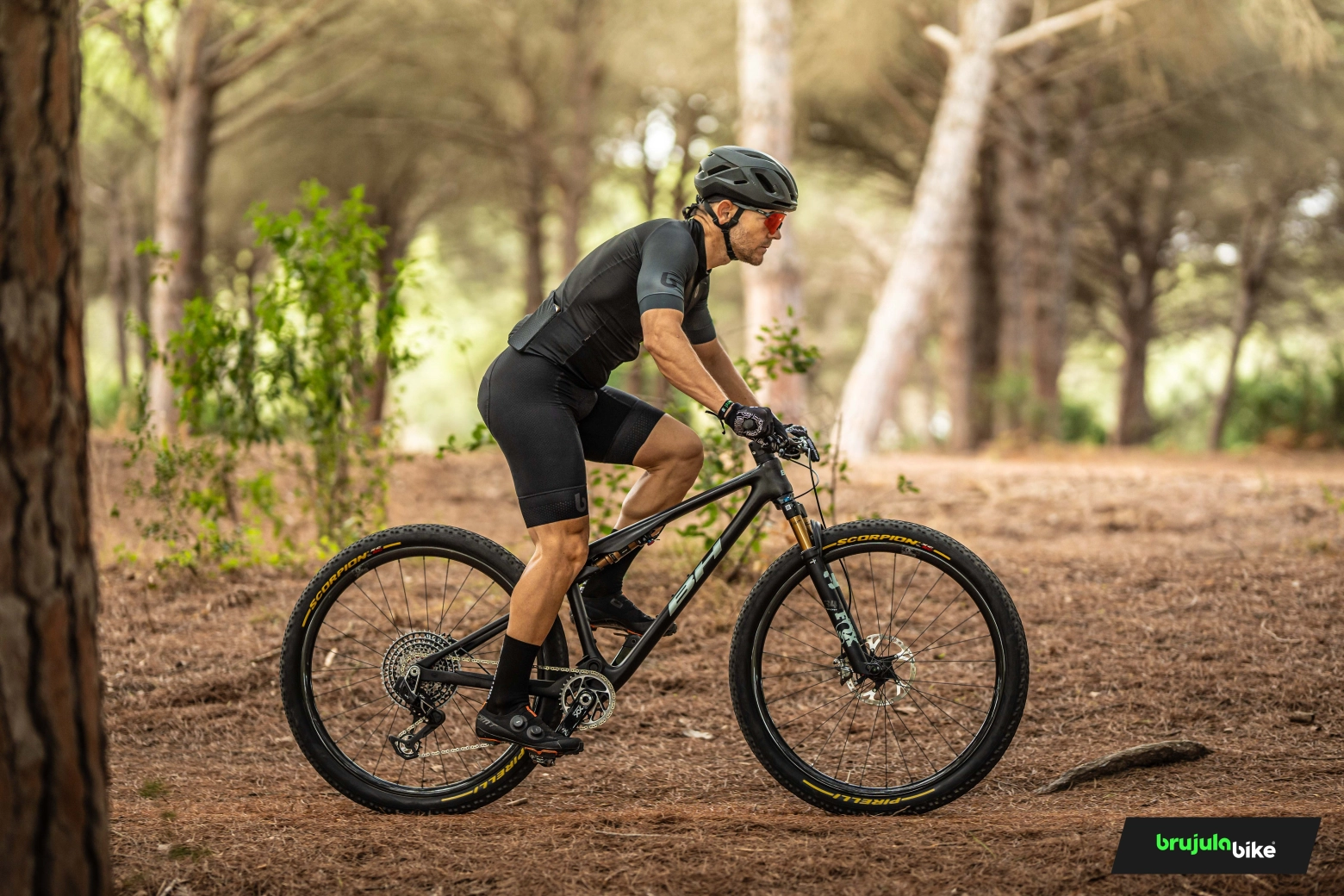
But if the terrain starts to get rough, we open the suspensions and, if we have found the right setup, we can maintain a high cruising speed and the rear end will allow us to keep pedaling in those broken areas with great comfort.
As we mentioned, it is an active suspension, and no large impacts are needed for it to start filtering them, with just the right amount of movement. We have 80mm of travel and a slightly regressive compression curve, especially from the sag point, and this, combined with the inherent progressivity of the shock absorber, results in a fairly linear overall feel, which allows us to make good use of the travel on impacts of a certain magnitude, but at the beginning of the travel, it is firmer and, although the suspension is active, the movements on light impacts are not excessive.
As we have already mentioned, the BH Lynx SLS does not require a very forced position, and we have adapted to it really well, doing routes of many hours and mileage without any problems.
Although we are not dealing with an XCO bike over-equipped in terms of suspensions, as is the trend lately, we do not avoid at all the most demanding trails, to see how far we can go with the SLS. And the truth is that we have been able to face many challenging sections with the BH. It is not as plush and smooth as other 120mm bikes, but in return, it offers very good reactivity and is very easy to take exactly where we want. Additionally, we have the advantage of a dropper post with 125mm of travel and a cockpit that positions us in a situation of great control in these situations.
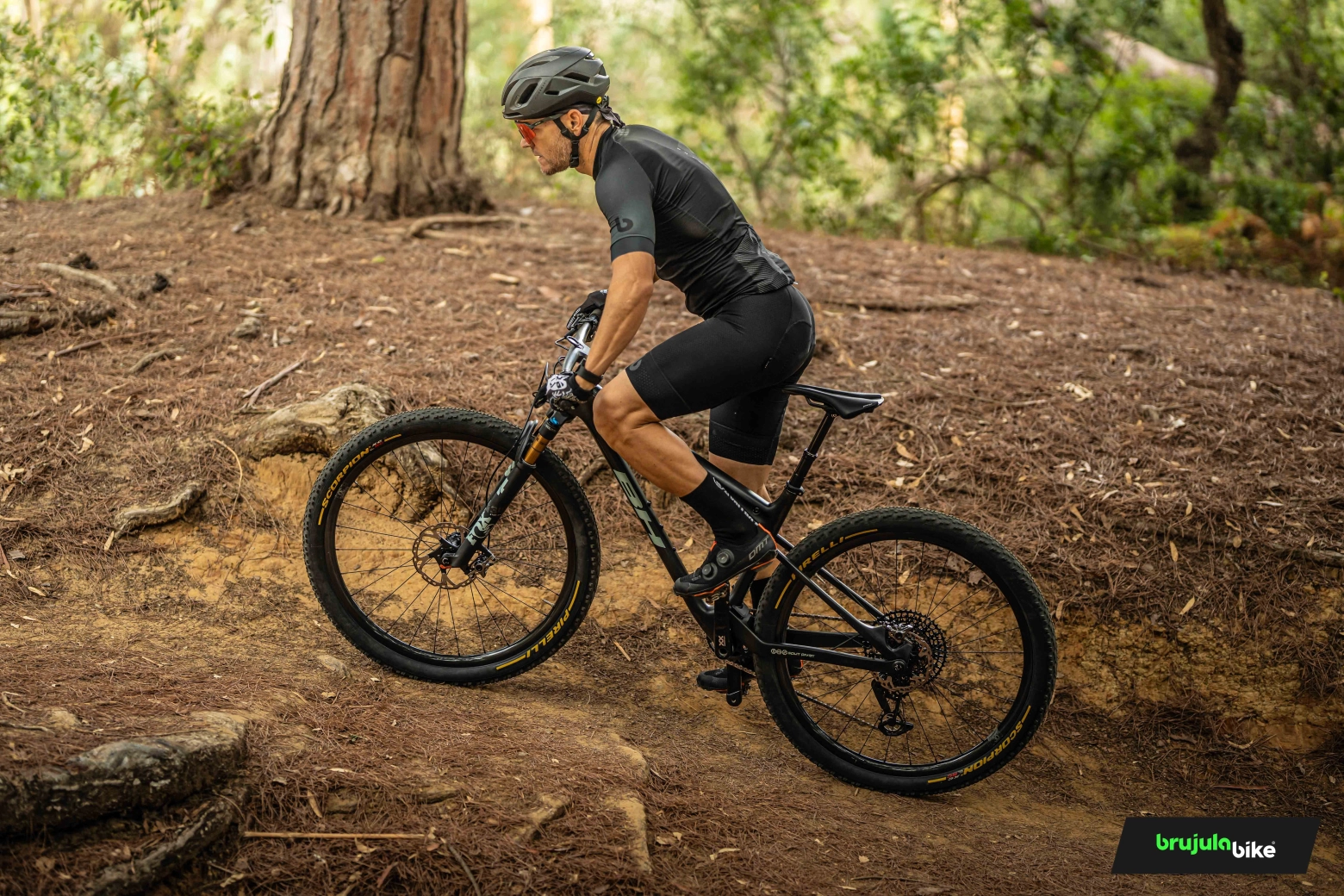
The tires are probably the most limiting factor in this aspect, as they are mainly rolling tires and, although their grip seems quite good to us, in challenging situations we do not have the security of a more aggressive tread.
Regarding the performance of the components. Once again, we have been able to verify the reliability of the Sram XX SL transmission, which allows us to shift in all force situations we may encounter. What used to be considered abusing a transmission a few years ago is now what it is designed for.
The brakes have also performed excellently, despite being the 2-piston XTR version, they have shown a bite and forcefulness that has given us total security.
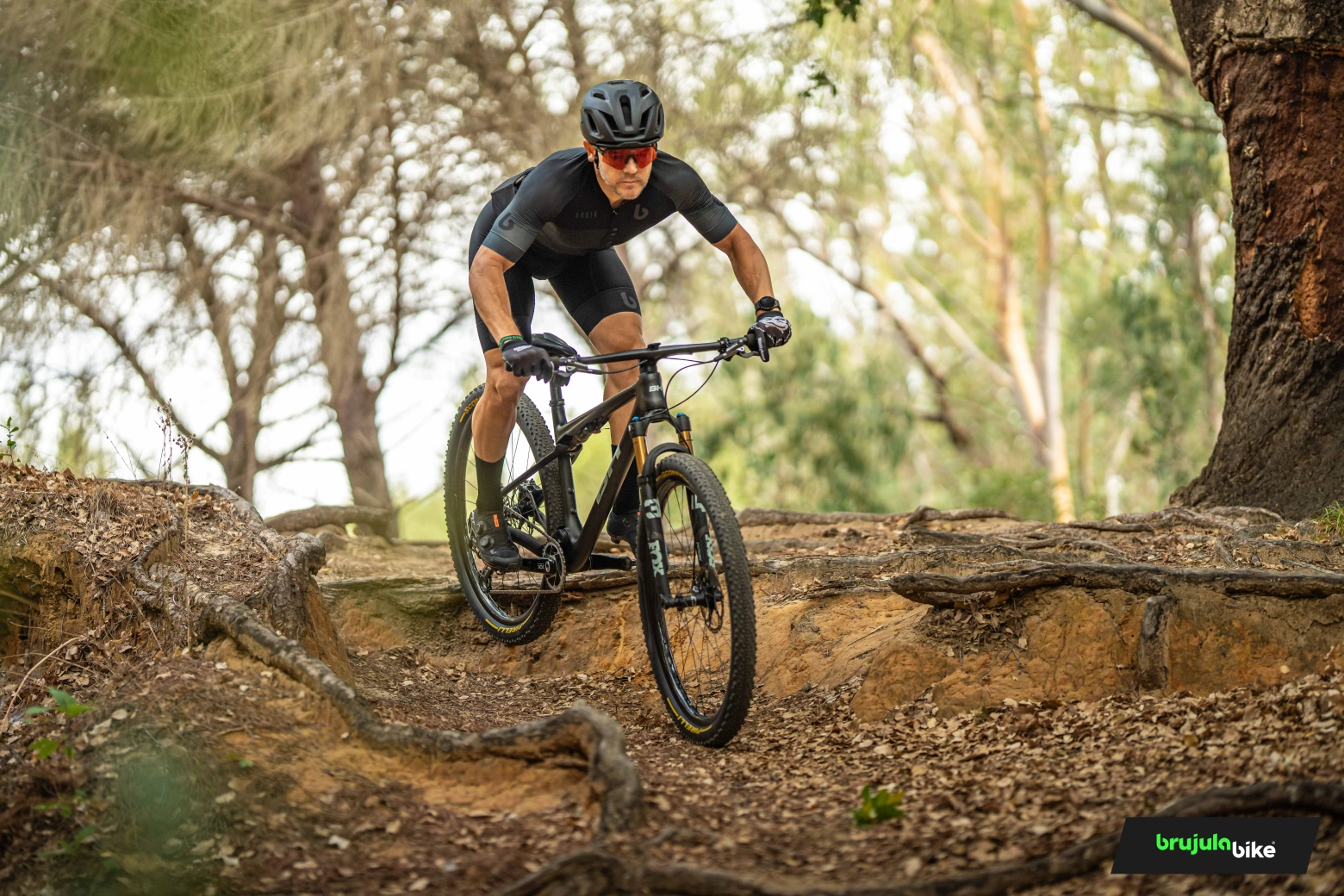
The integrated cockpit has a system to be able to adjust the steering without the need of a spider, as for example if we put the BH FIT tool kit on the steerer tube, and despite the fact that the clamping force to the fork tube itself is done with a single screw, it has given us a perfect result, without the need for any readjustment in all our tests.
And we also have to talk about the wheels, which have given us a very good feeling in terms of stiffness and behavior, as well as good finishes, and its rear hub, as we said at the beginning, which will not leave anyone indifferent as its sound is one of the loudest we have tested. This is something that not everyone will like, although others will love it.
The Prologo Nago R4 saddle also deserves a special mention, with carbon rails and a very light weight, we found it really comfortable.
Conclusions
We have enjoyed the BH Lynx SLS for a good season, which has even given us the opportunity to put a bib on it and participate in a stage race, with a really good result (of the bike).
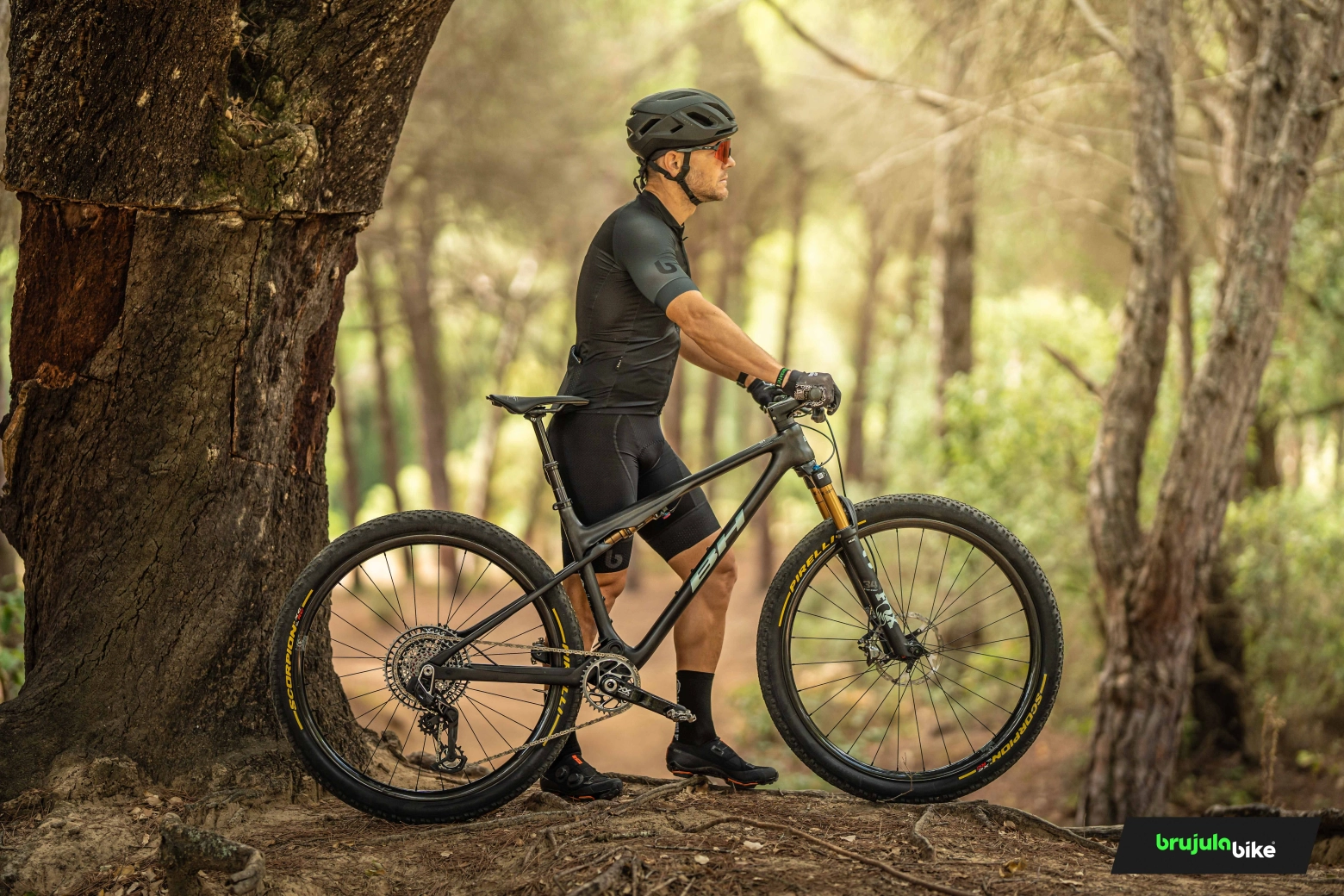
We found it to be a much more versatile bike than we initially expected. It may have been designed with maximum performance in competition in mind, but the truth is that a bike with 110mm front and 80mm rear travel, balanced geometry, telescopic seatpost and an extraordinary lightness, is what a large majority of users require either to compete, at whatever level, or to enjoy a leisure MTB with a certain sporting spirit.
The BH Lynx SLS range consists of 4 models that share the same frame. At the top we find the 9.9 model, with a very similar assembly to the one tested here, but with Rock Shox Flight Attendant suspensions and at a price of 11,999€. And the entry model to the range offers Fox Factory suspensions and a complete Shimano XT groupset for 6,299€.
BH Lynx SLS 9.7: specifications, weight and price
- Frame: Lynx SLS
- Fork: Fox 34SC Factory Kashima, 110mm
- Shock: Fox SL Factory, 190x40mm
- Shifter: Sram XX SL
- Rear derailleur: Sram XX SL T-Type
- Crankset: Sram XX SL, 34T
- Cassette: Sram XX SL T-Type, 10-52
- Chain: Sram XX SL T-Type
- Brakes: Shimano XTR, 180mm / 160mm
- Wheels: BH EVO Carbon SL, 30mm, 28H
- Tires: Pirelli Scorpion XC RC, 2,4”
- Saddle: Prologo Nago R4
- Seatpost: BikeYoke Divine SL, 31,6mm, 125mm Drop
- Handlebar: BH Stealth Top Flat, 60mm, 760mm, 10mm Rise
- Weight: 9.97kg
- Price: 9,999€